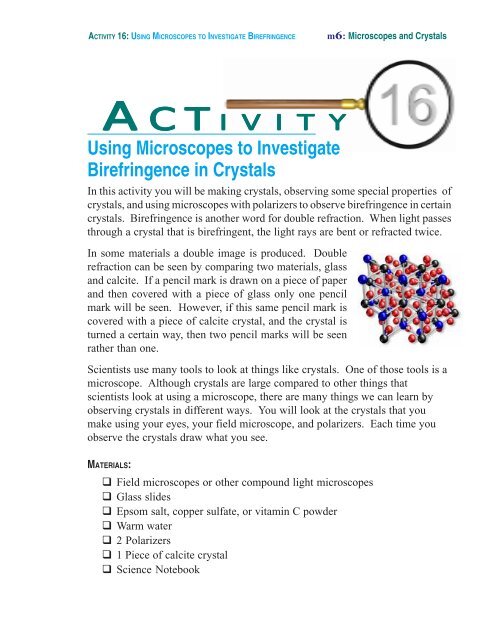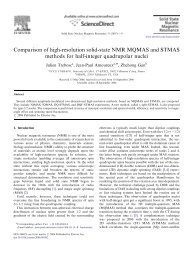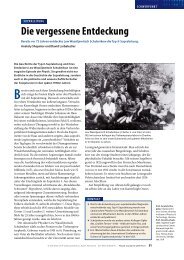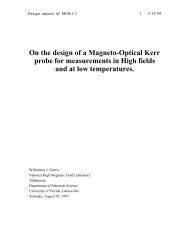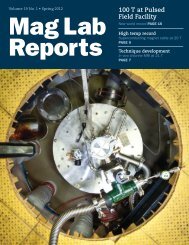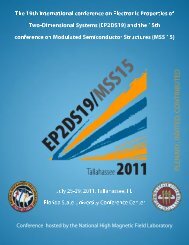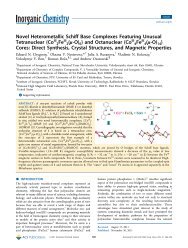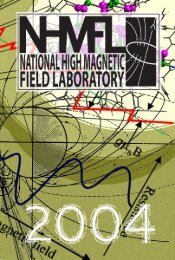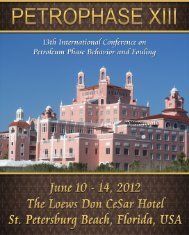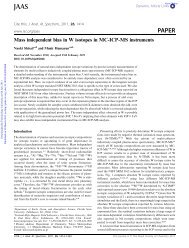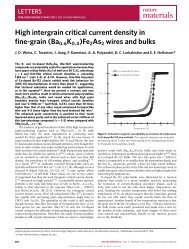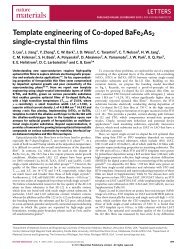Microscopes and Crystals - National High Magnetic Field Laboratory
Microscopes and Crystals - National High Magnetic Field Laboratory
Microscopes and Crystals - National High Magnetic Field Laboratory
You also want an ePaper? Increase the reach of your titles
YUMPU automatically turns print PDFs into web optimized ePapers that Google loves.
ACTIVITY 16: USING MICROSCOPES TO INVESTIGATE BIREFRINGENCE<br />
m6: <strong>Microscopes</strong> <strong>and</strong> <strong>Crystals</strong><br />
A CT<br />
CTIVITY<br />
Using <strong>Microscopes</strong> to Investigate<br />
Birefringence in <strong>Crystals</strong><br />
In this activity you will be making crystals, observing some special properties of<br />
crystals, <strong>and</strong> using microscopes with polarizers to observe birefringence in certain<br />
crystals. Birefringence is another word for double refraction. When light passes<br />
through a crystal that is birefringent, the light rays are bent or refracted twice.<br />
In some materials a double image is produced. Double<br />
refraction can be seen by comparing two materials, glass<br />
<strong>and</strong> calcite. If a pencil mark is drawn on a piece of paper<br />
<strong>and</strong> then covered with a piece of glass only one pencil<br />
mark will be seen. However, if this same pencil mark is<br />
covered with a piece of calcite crystal, <strong>and</strong> the crystal is<br />
turned a certain way, then two pencil marks will be seen<br />
rather than one.<br />
Scientists use many tools to look at things like crystals. One of those tools is a<br />
microscope. Although crystals are large compared to other things that<br />
scientists look at using a microscope, there are many things we can learn by<br />
observing crystals in different ways. You will look at the crystals that you<br />
make using your eyes, your field microscope, <strong>and</strong> polarizers. Each time you<br />
observe the crystals draw what you see.<br />
MATERIALS:<br />
! <strong>Field</strong> microscopes or other compound light microscopes<br />
! Glass slides<br />
! Epsom salt, copper sulfate, or vitamin C powder<br />
! Warm water<br />
! 2 Polarizers<br />
! 1 Piece of calcite crystal<br />
! Science Notebook<br />
SCIENCE, OPTICS & YOU GUIDEBOOK<br />
- 157 -


